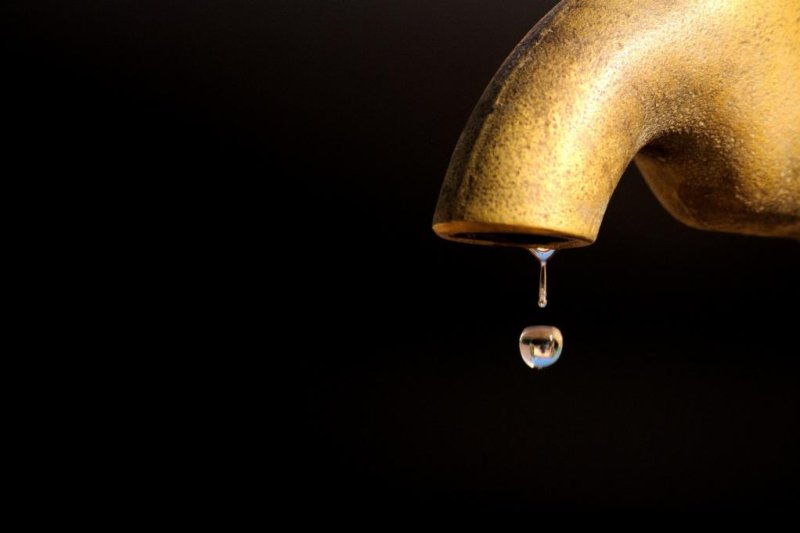A new study explains the annoying 'plink' sound made by a dripping faucet. Photo by StockSnap/
Pixabay
June 22 (UPI) -- Why is the sound of a leaky faucet so loud and annoying? Scientists finally have an answer -- and a solution.
The sound made by a dripping faucet isn't produced by the droplet itself, researchers found, but by a tiny pocket of air trapped beneath the water's surface. The miniature bubble causes the water to oscillate, producing a distinct sound.
"A lot of work has been done on the physical mechanics of a dripping tap, but not very much has been done on the sound," Anurag Agarwal, an engineer at the University of Cambridge, said in a news release. "But thanks to modern video and audio technology, we can finally find out exactly where the sound is coming from, which may help us to stop it."
Agarwal, who studies acoustics and aerodynamics as they relate to aerospace and biomedical technologies, was inspired to investigate the phenomenon after a particularly restless night of sleep while visiting a friend with a leak in the roof of his house.
"While I was being kept awake by the sound of water falling into a bucket placed underneath the leak, I started thinking about this problem," Agarwal said. "The next day I discussed it with my friend and another visiting academic, and we were all surprised that no one had actually answered the question of what causes the sound."
Back in the lab, Agarwal set up an experiment featuring an ultra-high-speed camera, microphone and hydrophone. He and his colleagues used the instruments to document and measure leaking water droplets falling into a pool of water.
As many previous experiments have documented, a droplet forms a small cavity, like a crater, when it hits the surface of the water. This indentation quickly recoils as a result of surface tension and a water column rises back up. Due to the speed of the recoil action, a tiny bubble gets trapped beneath the surface of the water.
Until now, most scientists surmised the "plink" sound caused by a dripping faucet could be explained by the impact of the falling droplet.
But the new measurements made by Agarwal showed the cavity-creation process and splash are essentially silent. The hydrophone revealed the trapped air bubble as the true source of the "plink."
"Using high-speed cameras and high-sensitivity microphones, we were able to directly observe the oscillation of the air bubble for the first time, showing that the air bubble is the key driver for both the underwater sound, and the distinctive airborne 'plink' sound," said Phillips, now a PhD student in the engineering department at Cambridge. "However, the airborne sound is not simply the underwater sound field spreading to the surface, as had been previously thought."
A few studies had previously hinted at this possibility, but Agarwal's study is the first to confirm the phenomenon through precise and direct measurement.
The study, published Friday in the journal Scientific Reports, also showed the mechanism is most efficient when the air bubble is closer to the surface. When the bubble triggers oscillations of the surface at the bottom of the cavity, a piston-like mechanism drives sound waves into the air.















